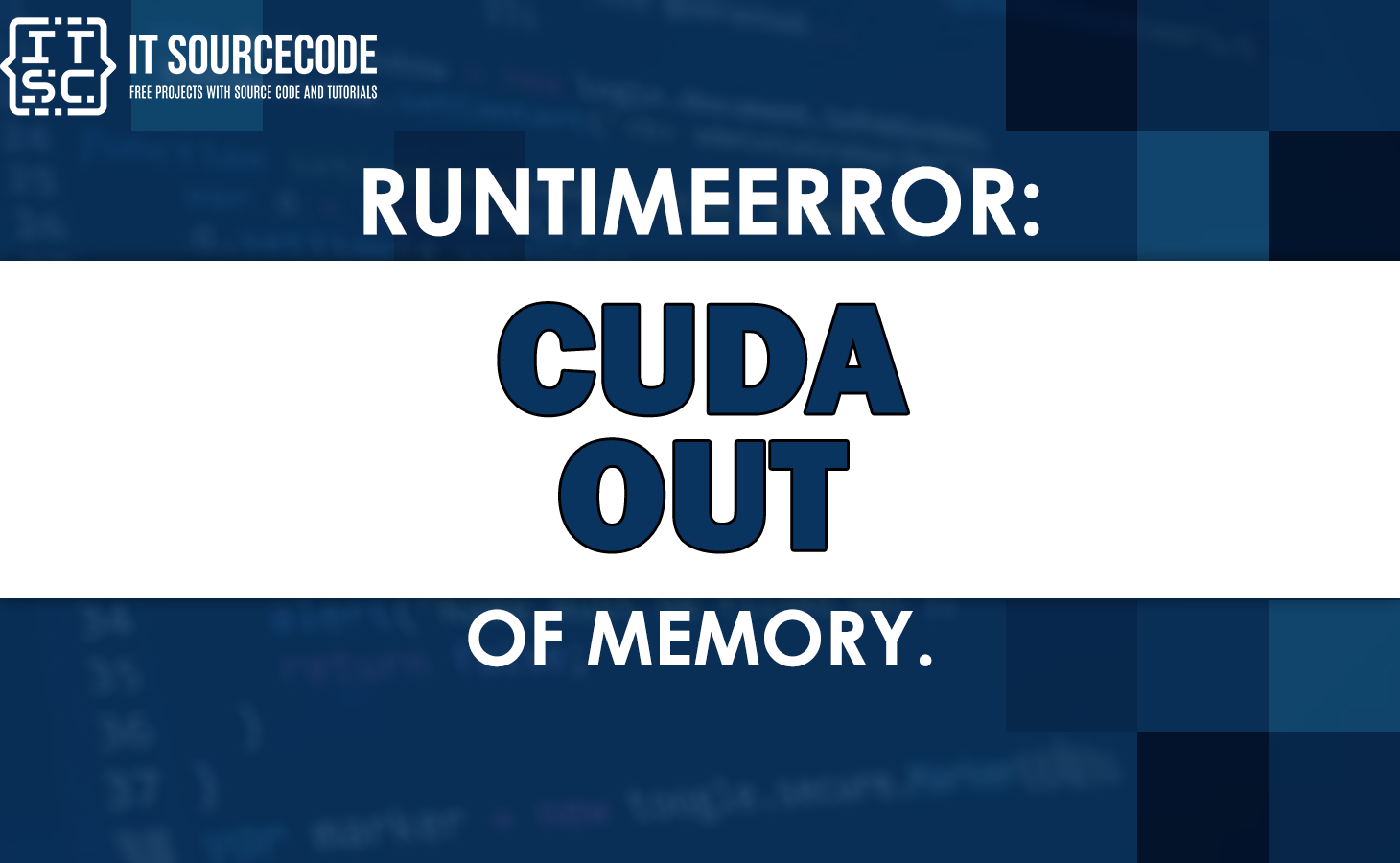This error message Runtimeerror: cuda out of memory is often encountered when the system is not able to allocate enough memory on the GPU to complete the requested operation.
In this article, we will provide you with a detailed understanding of the error message, “runtimeerror: cuda out of memory.” and how you can troubleshoot and fix it.
Why you encounter this error?
If you encounter the “runtimeerror: cuda out of memory” error message, it means that the GPU is running out of memory while processing a precise task.
Alternatively, the GPU has a limited amount of memory, and if the amount of memory needed by the project exceeds the available memory, the “cuda out of memory” error message will occur.
What are the Causes of the Error?
Here are some of the most common causes:
- Insufficient Memory on the GPU
- Large Batch Size
- Complex Model Architecture
How to Solve the Error?
Time needed: 3 minutes
Here are the solutions to help you fix the runtimeerror cuda out of memory error message:
- Solution 1: Reduce the Batch Size
One of the most effective solutions for addressing the “cuda out of memory” error message is to reduce the batch size.
If the batch size is reduced, the amount of memory needed to process each batch is also reduced, and the GPU can handle the task without running out of memory. - Solution 2: Upgrade the GPU
If reducing the batch size doesn’t resolve the issue, upgrading the GPU to one with more memory is a possible solution.
This option is only required if you usually encounter the “cuda out of memory” error message and require more processing power for your machine learning or deep learning tasks. - Solution 3: Simplify the Model Architecture
Simplifying the model architecture can also help resolve the “runtimeerror cuda out of memory” error message.
This can be done by reducing the number of layers, decreasing the number of neurons, or using a simpler architecture. - Solution 4: Use lower precision
Mixed precision training is a technique which can be used to reduce the memory requirements of deep learning models.
This technique uses lower precision data types for certain operations, reducing the amount of memory required for processing. This way can permanently reduce the memory requirements of deep learning models. - Solution 5: Use Gradient Checkpointing
Gradient checkpointing is another solution that can help reduce the memory requirements of deep learning models.
This method works by trading off computation time for memory by computing intermediate activations on-the-fly instead of storing them in memory.
This can significantly reduce the memory requirements of deep learning models and help avoid the “runtimeerror: cuda out of memory” error message. - Solution 6: Use Data Parallelism
Data parallelism is a method that can be used to distribute the workload across multiple GPUs.
This method will be able to help reduce the memory requirements of deep learning models by dividing the task into smaller sub-tasks that can be processed on multiple GPUs simultaneously.
This can help avoid the “runtimeerror: cuda out of memory” error message and improve the performance of your machine learning or deep learning tasks. - Solution 7: Use Memory Optimization Methods
Multiple memory optimization techniques can be used to reduce the memory requirements of deep learning models.
It consists of weight pruning, activation pruning, and quantization. Weight pruning involves removing redundant weights from the model, while activation pruning involves removing redundant activations.
Quantization involves reducing the precision of the model parameters to reduce the memory requirements.
Other Solutions to Resolved the Error
The following solution is the other way to solve the error:
Release Cache
To know how much memory your model takes on cuda you can try:
For example: Use this code to clear the memory:
import torch
torch.cuda.empty_cache()Also the other way to clear the memory :
from numba import cuda
cuda.select_device(0)
cuda.close()
cuda.select_device(0)Another example code:
import gc
def report_gpu():
print(torch.cuda.list_gpu_processes())
gc.collect()
torch.cuda.empty_cache()FAQs
You can check the GPU memory usage using the torch.cuda.memory_allocated() function. If the memory usage is close to the total memory available on your GPU, you are likely running out of GPU memory.
No, adding more RAM to your computer will not fix the Runtimeerror: cuda out of memory. error. This error is related to the memory on your GPU, not your computer’s RAM.
No, data parallelism requires multiple GPUs to be effective. If you only have one GPU, you may need to try one of the other solutions to fix the Runtimeerror: cuda out of memory. error.
Additional Resources
The following articles resources will be helpful to you to understand more about Runtimerror:
Conclusion
In conclusion, we discuss the causes of the error, and why it is occur and we provide some solutions that you may able to apply to solve the error.
Alternatively, we provide solutions that will help you to fix this error, consisting of reducing the batch size, upgrading the GPU, and simplifying the model architecture.
Also, using mixed precision training, gradient checkpointing, data parallelism, and using memory optimization techniques.
Remember to choose the solution that best fits your needs and the specific requirements of your project.

